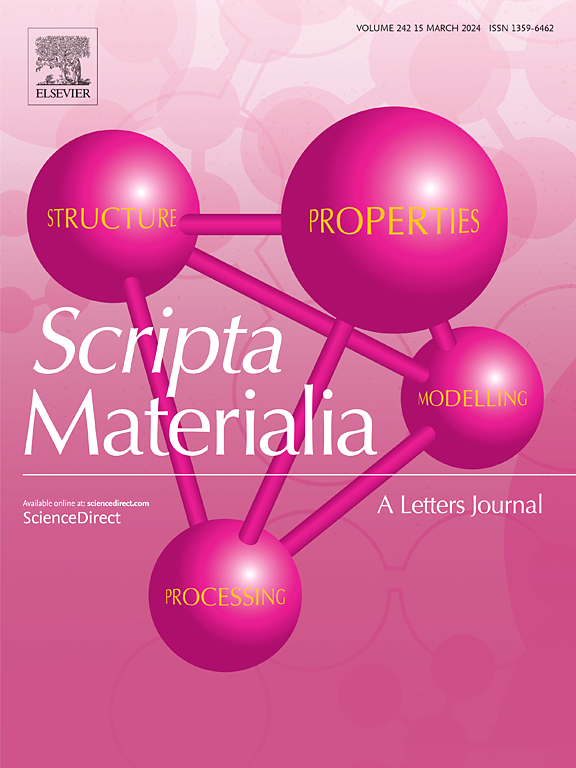低温下掺pr MnBi磁体中的交换偏置现象
IF 5.3
2区 材料科学
Q2 MATERIALS SCIENCE, MULTIDISCIPLINARY
引用次数: 0
摘要
MnBi磁体在高性能非稀土永磁体方面具有巨大的发展潜力。交换偏置现象对增强其矫顽力起着至关重要的作用。掺pr的MnBi合金在低温下表现出明显的交换偏置效应。交换偏置场在Pr掺杂时先增大,达到最大值9.37 kOe,在较高掺杂水平时减小,矫顽力在17.59 kOe处达到峰值。交换偏置场随着温度、外加磁场和反复磁循环的升高而减小,突出了其对这些因素的敏感性。微磁模拟表明,交换偏置是由铁磁MnBi相和非晶反铁磁相之间的强界面耦合引起的。模拟还再现了训练效应,表明反铁磁界面的净磁化强度随着重复循环逐渐降低。该研究促进了对交换偏置现象的理解,有助于高性能MnBi磁体的发展。本文章由计算机程序翻译,如有差异,请以英文原文为准。

Exchange bias phenomena in Pr-doped MnBi magnets at low temperatures
MnBi magnets hold significant potential for the development of high-performance non-rare-earth permanent magnets. The exchange bias phenomenon plays a crucial role in enhancing their coercivity. Pr-doped MnBi alloys exhibits a pronounced exchange bias effect at low temperatures. The exchange bias field initially increases with Pr doping, reaching a maximum of 9.37 kOe, and then decreases at higher doping levels, while the coercivity peaks at 17.59 kOe. The exchange bias field diminishes with rising temperature, applied magnetic field, and repeated magnetic cycling, highlighting its sensitivity to these factors. Micromagnetic simulations reveal that the exchange bias arises from strong interfacial coupling between the ferromagnetic MnBi phase and an amorphous antiferromagnetic phase. The simulations also reproduce the training effect, demonstrating a gradual reduction in net magnetization at the antiferromagnetic interface with repeated cycling. This study advances the understanding of exchange bias phenomena and contributes to the development of high-performance MnBi magnets.
求助全文
通过发布文献求助,成功后即可免费获取论文全文。
去求助
来源期刊

Scripta Materialia
工程技术-材料科学:综合
CiteScore
11.40
自引率
5.00%
发文量
581
审稿时长
34 days
期刊介绍:
Scripta Materialia is a LETTERS journal of Acta Materialia, providing a forum for the rapid publication of short communications on the relationship between the structure and the properties of inorganic materials. The emphasis is on originality rather than incremental research. Short reports on the development of materials with novel or substantially improved properties are also welcomed. Emphasis is on either the functional or mechanical behavior of metals, ceramics and semiconductors at all length scales.
 求助内容:
求助内容: 应助结果提醒方式:
应助结果提醒方式:


